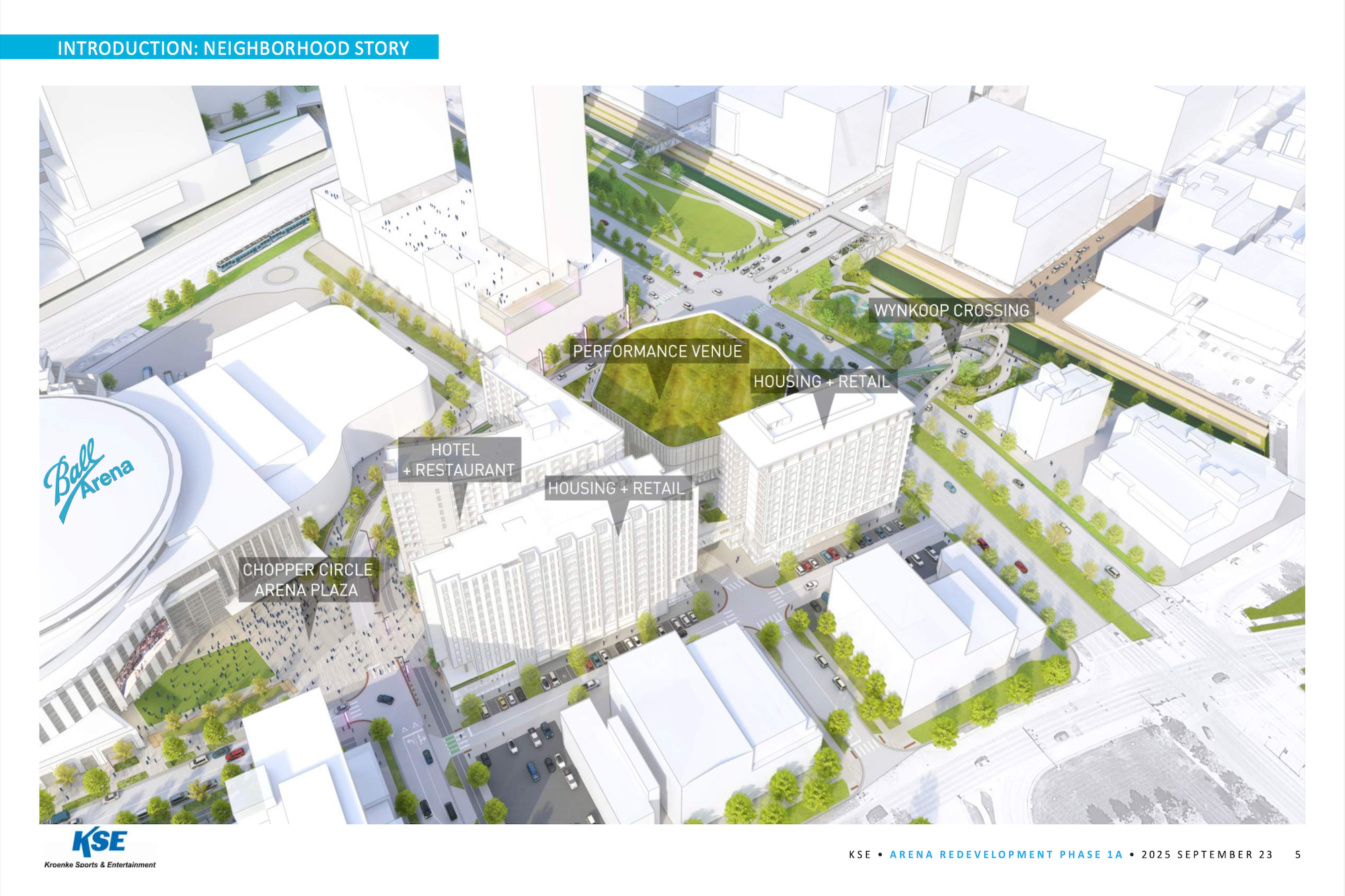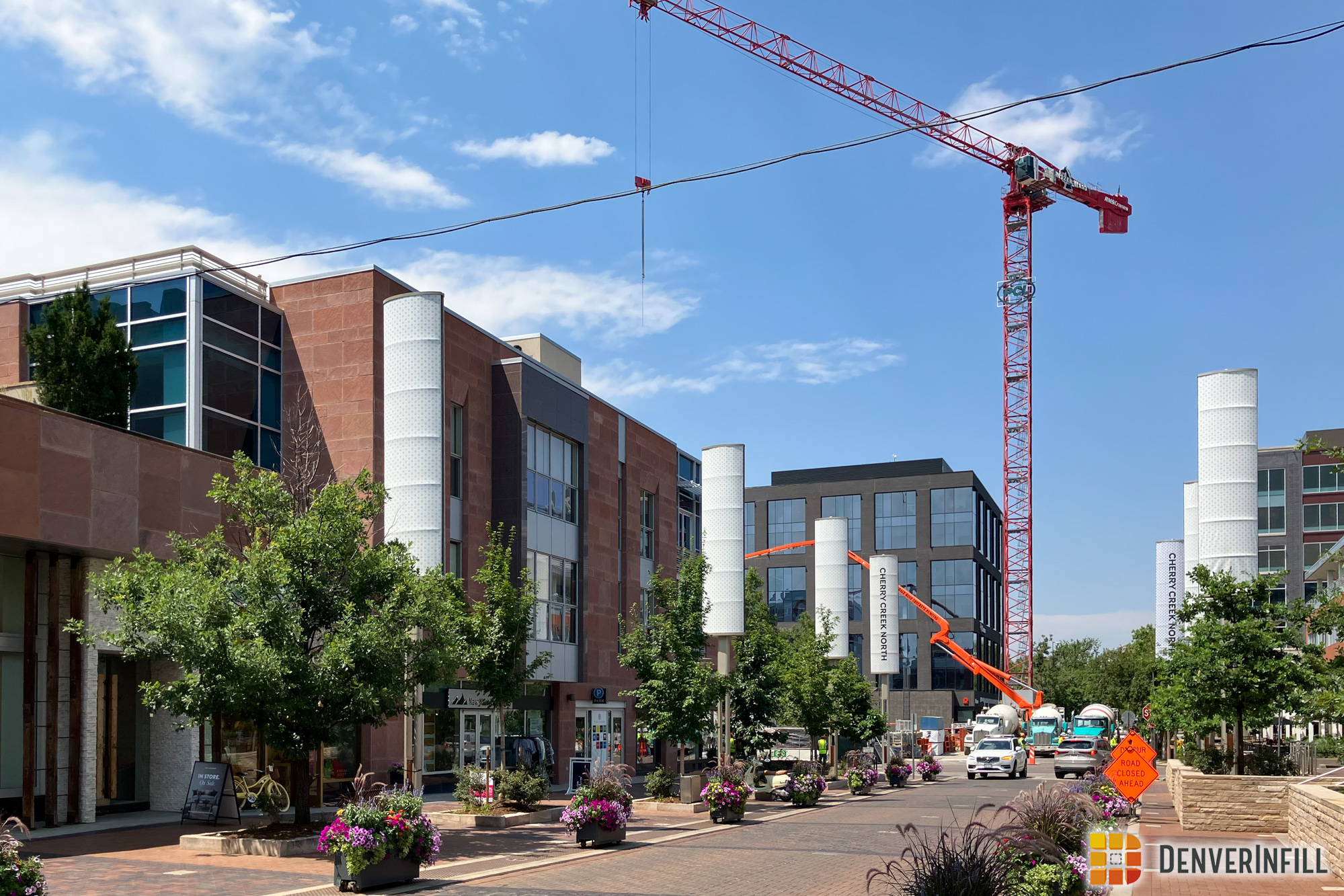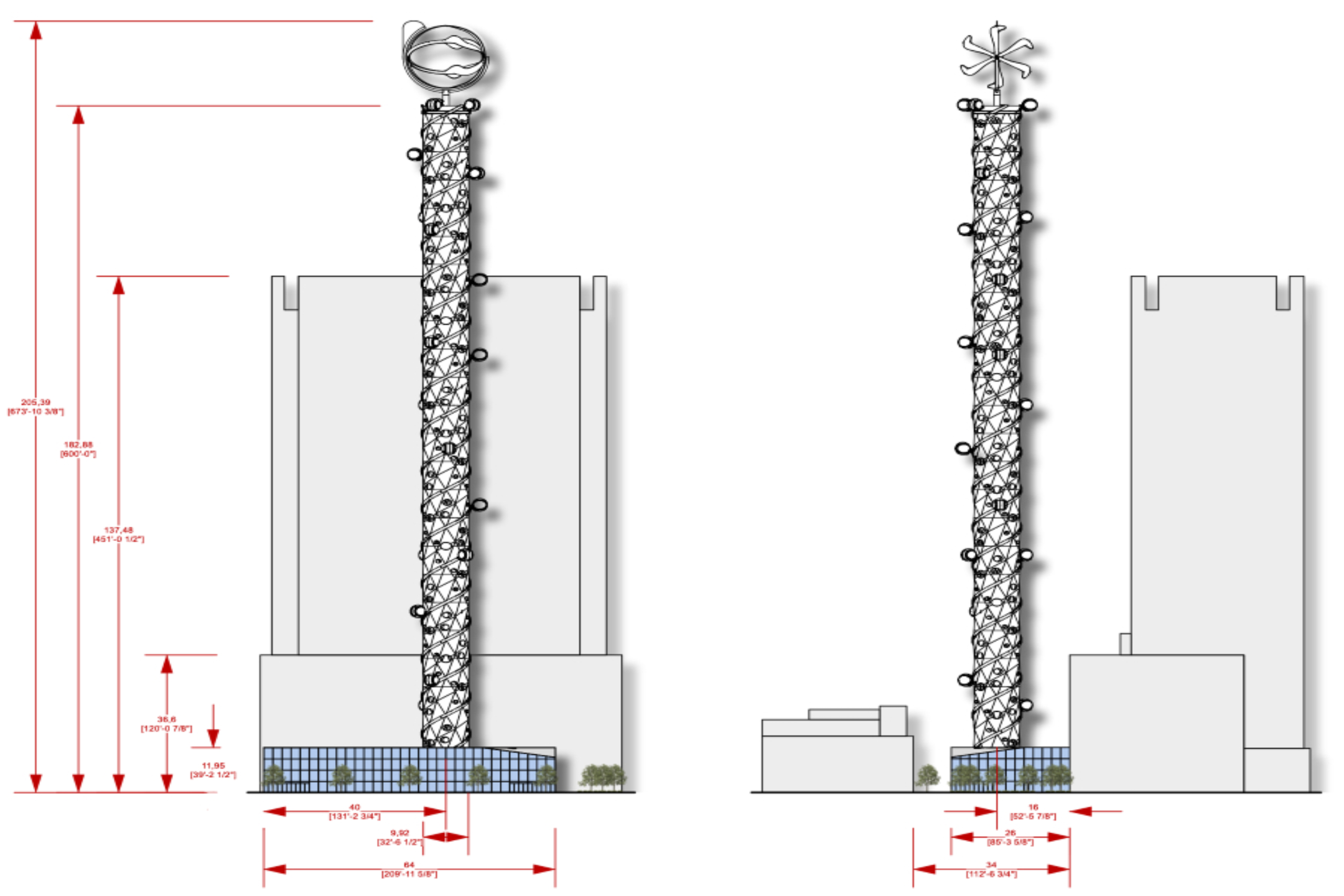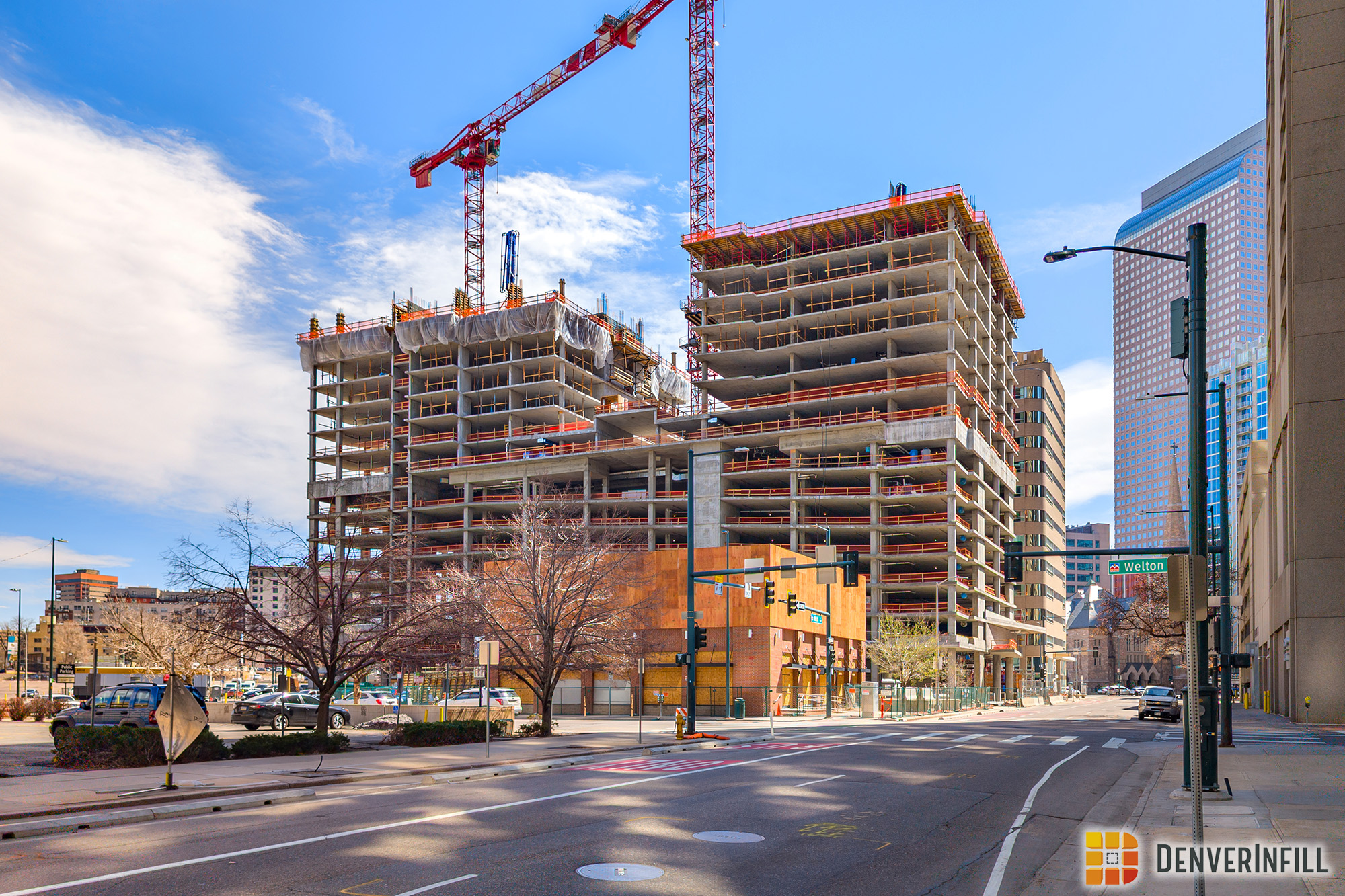It has been 14 months since we have announced the Alexan Uptown project going up on the half block between 19th and 20th Avenue along Logan Street. Construction has commenced and there is now something new on the Uptown skyline.
A red Potain tower crane has recently gone up on the site. We, here at DenverInfill, love tower cranes and are always glad to see them go up! In the first photo, you can also see the yellow SkyHouse tower crane in front of Republic Plaza.
Workers are busy pouring the foundation and underground levels of this project. Alexan Uptown will have one underground and four above ground levels of parking.
Alexan Uptown will provide the Uptown neighborhood with 372 apartment units in a 12-story building while eliminating one of the worst parking lots in the area.















“…while eliminating one of the worst parking lots in the area.” That would be a very good thing.
BTW, I like seeing early stage construction photos. 🙂
Noticed a very strange thing – the floor they are pouring at the bottom of this excavation is 3+ feet thick! The only other floor I’ve seen like that is the floor of the Union Station underground bus terminal and I think that was to combat a high water table lifting the floor. But I see no water is this excavation. Curious.
It could be a mat slab foundation where instead of drilling piers they pour a thickened slab to distribute the lateral loads of the building. This is usually done in areas with sandy soil and deep bedrock like Cherry Creek.
Just a guess, Dan, but there’s a new trend in foundations for big buildings. Rather than distribute the building’s weight onto load-bearing cassons — which are drilled deep down into bedrock — the whole structure sits on a thick pad. It’s a solid block of concrete, reinforced with steel. In LA, a 77-story tower downtown is rising from a 70-foot thick block of solid concrete and re-bar.
By comparison, Republic Plaza rests on a couple dozen 8 or 10-foot-thick steel-reinforced concrete cassons, some drilled more than a hundred feet deeper than the basement floor. Each one is drilled down to bedrock, which in Downtown Denver is called “Denver Blue” because of it’s color.
Maybe this building will sit on a solid pad — because that thicket of re-bar you can see in the last picture, with the steel workers walking around in it, looks like the same construction method we covered in Los Angeles last year, when they did “the world’s longest continuous concrete pour” for the foundation of an office-hotel supertower. But any type of foundation depends on the ground underneath it, which is the domain of soil engineers, who have to sign off on any design. Which means drilling test cores in the soil.
Just think about the unique foundation issues for the 34-story Confluence Tower, at the merging of Cherry Creek and the Platte. There are, of course, the same water table issues all the builders have to deal with along the river, as well as the bedrock situation directly below the tower, in a constantly eroding environment. So factor in a lot of water barriers around the basement — and big sump pumps, just in case.
Maybe Ryan can enlighten us all about these new — and old — foundation methods. Of course, cost is the main driver for whatever foundation is designed.
This was really interesting — thank you!
Nice post Nash!
I live a block from here and I’ve been watching them put this together since the fence went up in October. I walk by it a couple times a week. I’m assuming the drilling of the caissons would be quite obvious, even for a 12 story building, if that is are using that technique?
It’s probably designed as a mat slab, which means that they wouldn’t have individual caissons below all the columns, they just let the mat slab carry all the weight. If it is, then it’s no surprise that it is that thick.
All – Really enlightening explanations. I believe you have all nailed it. The soil under this building was soft sand – very soft even 15 feet down. Other buildings in the downtown area – Embassy Suites, Confluence, Union Station Bus Terminal – are all sitting on huge sand and gravel bars. Others – Excel Headquarters at 18th and Larimer – they encountered Denver Shale about 40 feet down. I understand better the foundation options for high rises when dealing with such a variety of ground conditions. Thanks all.